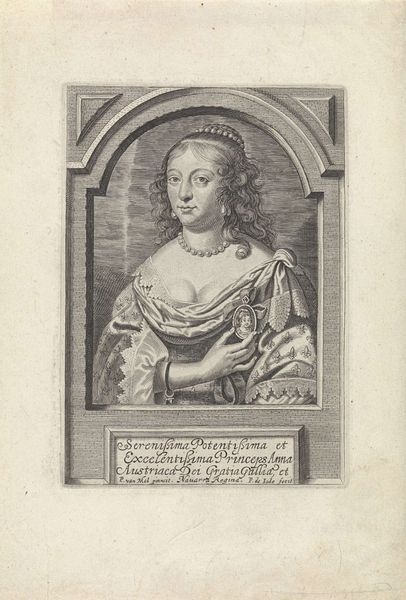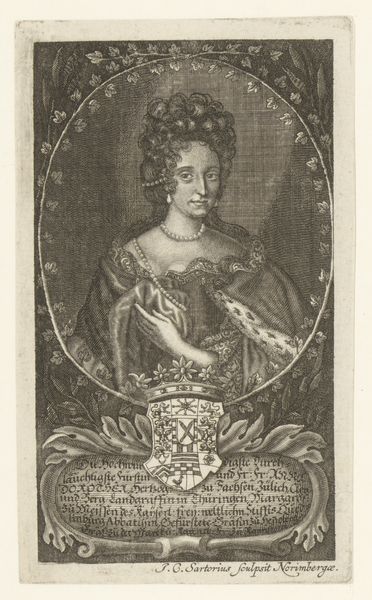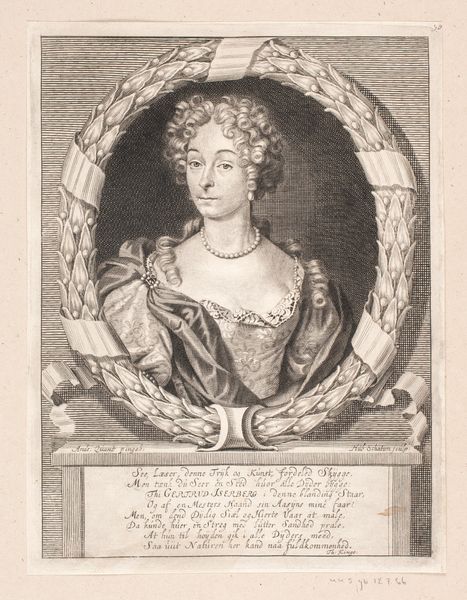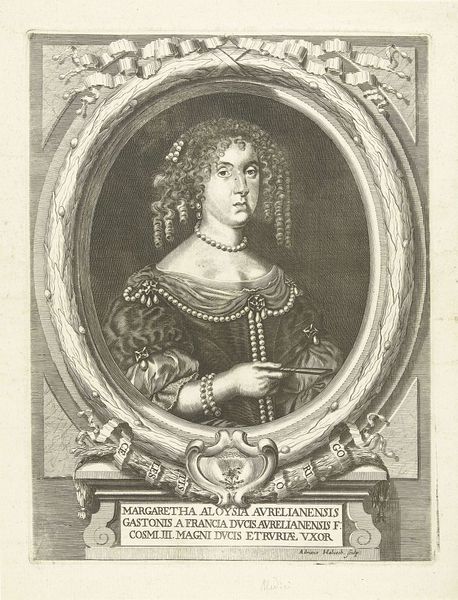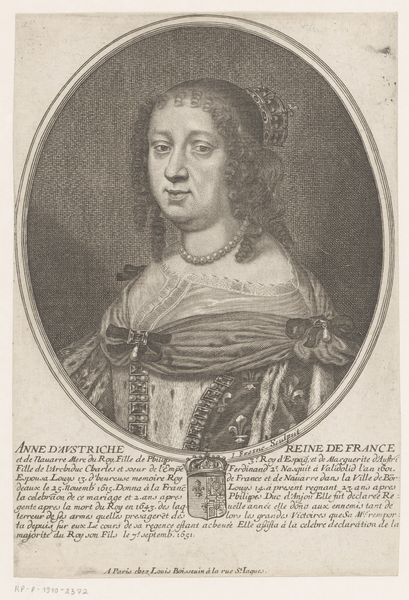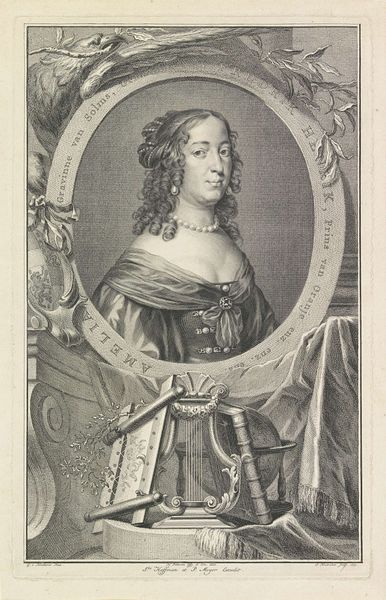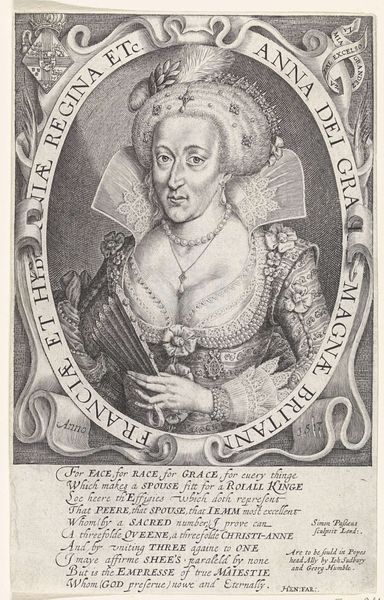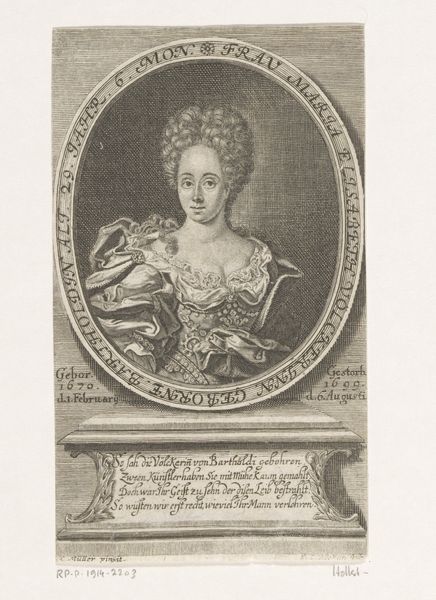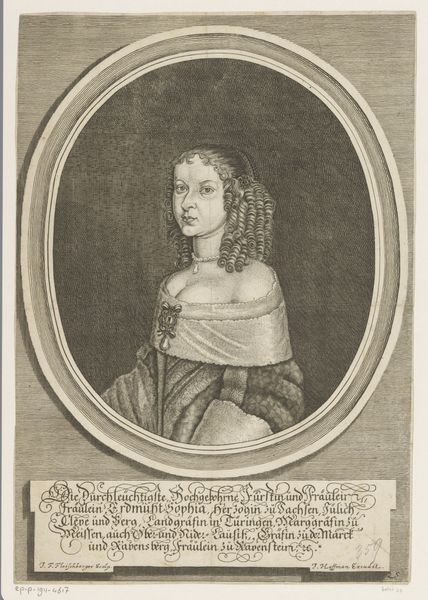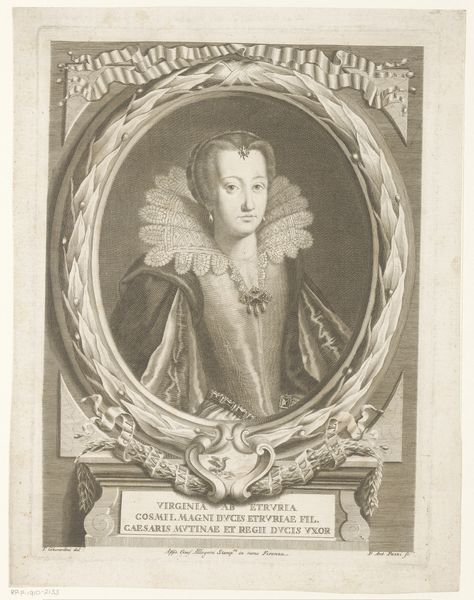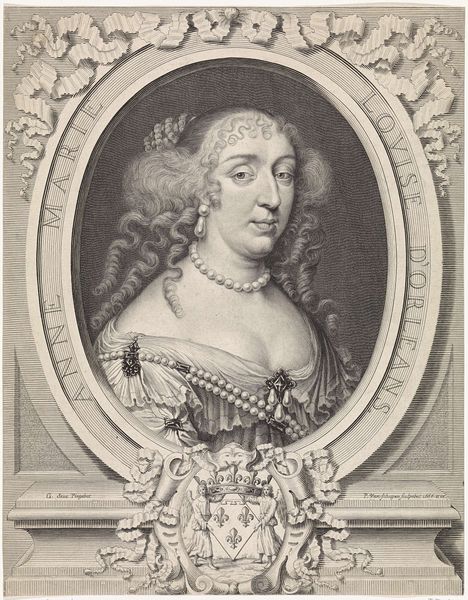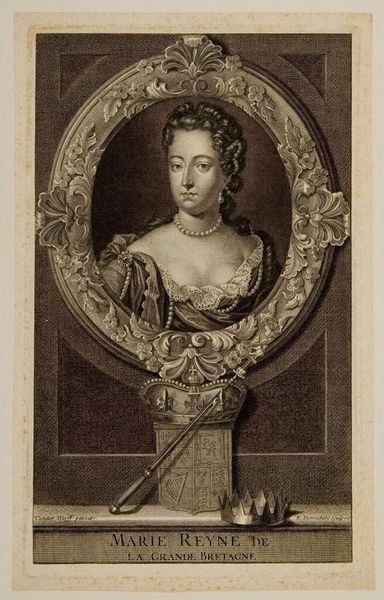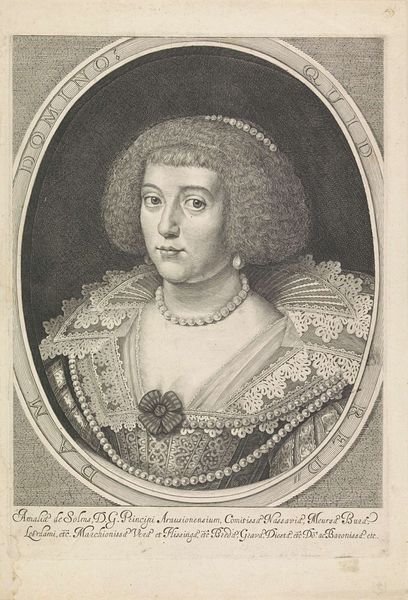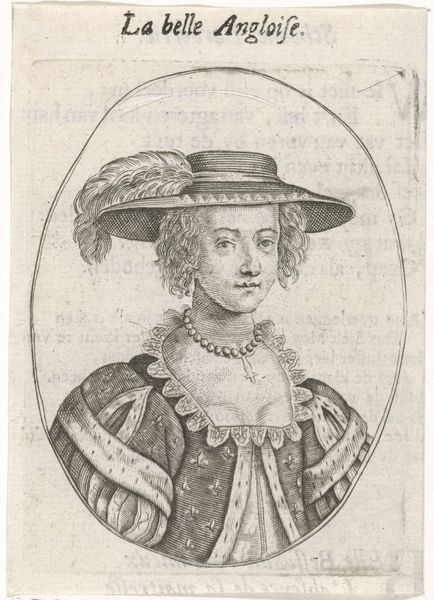
engraving
#
portrait
#
baroque
#
dutch-golden-age
#
engraving
Dimensions: height 154 mm, width 113 mm
Copyright: Rijks Museum: Open Domain
Editor: This is a 1638 engraving by Pieter de Jode II, after a painting by Van Dyck; it's a portrait of Amalia van Solms. The detail achieved with the engraving technique is impressive, but there's also a stiffness to the figure that I find interesting. What historical context shapes your reading of this image? Curator: Absolutely. Consider Amalia van Solms's role, not just as a woman, but as a key figure in shaping the Dutch Golden Age's cultural landscape and political dynamics. This portrait is not just a depiction of an individual; it's a strategic construction of power and identity. Editor: How so? Curator: Think about it: portraiture, particularly of nobility, served specific political and social functions. In the context of the Dutch Republic's struggle for independence, images of strong, capable leadership—even in female figures—were crucial for solidifying national identity and projecting an image of stability to both internal and external audiences. How does the subject’s attire contribute to this narrative? Editor: I see your point. The pearls, the elaborate dress... It’s communicating wealth, status, and perhaps even a divine right to rule, despite the Republic’s claims against monarchical power. Almost as propaganda? Curator: Precisely! This image becomes a complex intersection of personal representation and political messaging. Can we view this artwork, not as a static object, but as a dynamic participant within its historical moment? The artwork is then a catalyst for thinking about power, gender, and representation in the Dutch Golden Age. Editor: That definitely gives me a fresh perspective, seeing it less as a simple portrait and more as a statement of power. It’s fascinating how much these details can tell us. Curator: And by questioning those power dynamics we may view Amalia in an unconventional way. I hope this discussion gave you better appreciation for the interplay between art and broader socio-political landscapes.
Comments
No comments
Be the first to comment and join the conversation on the ultimate creative platform.
